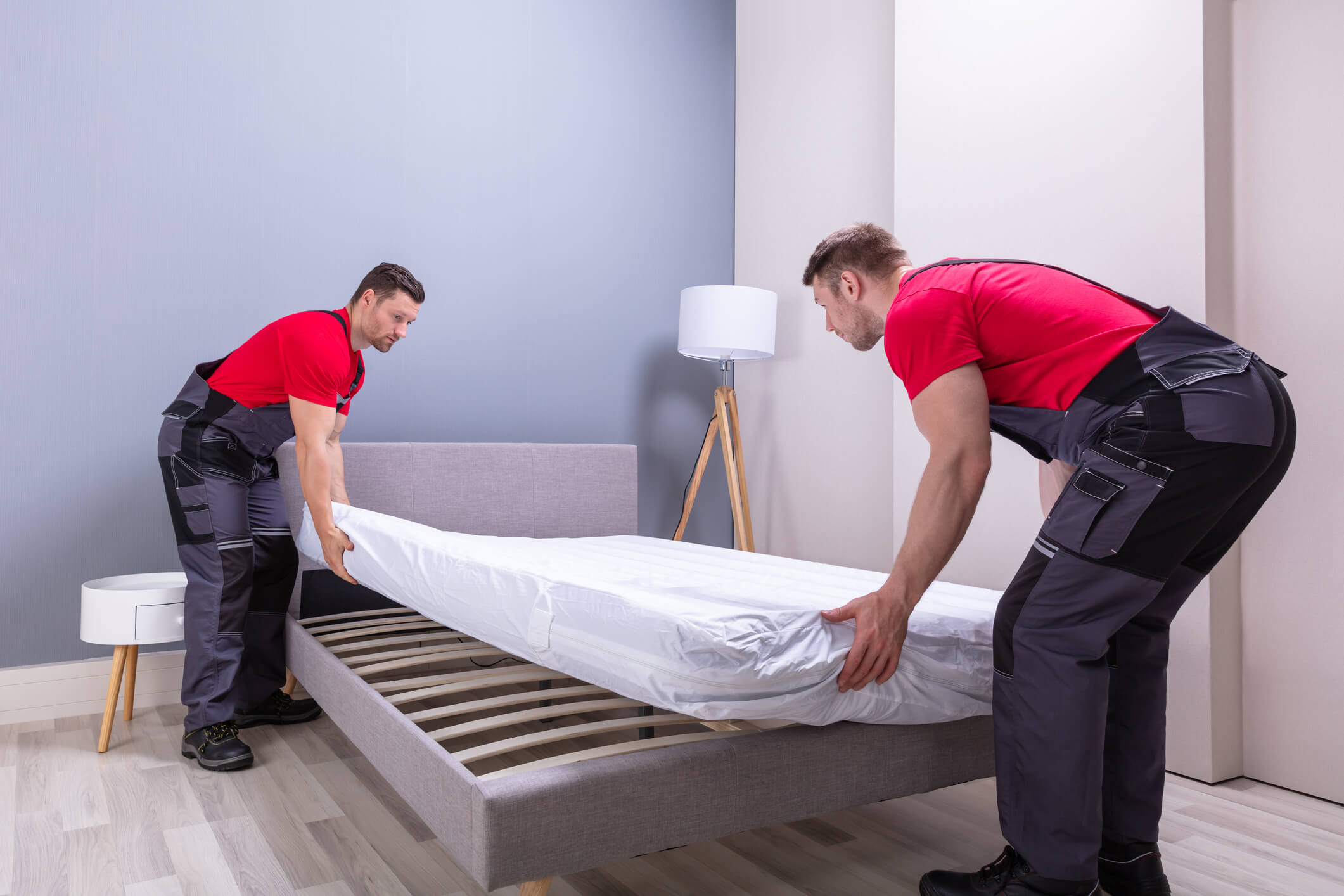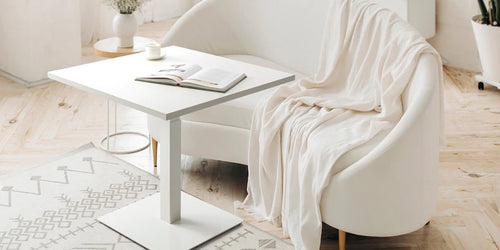There comes a time when owning more stuff becomes owning too much stuff. And all that stuff? It’s intimidating as all get out—especially when you have no clue where to start tossing.
Enter mindfulness, the practice that will help you declutter and destress in one fell swoop. The key to ditching the goodies you’ve stowed away in every nook and cranny (and moved around the country, to boot) is to do it bit by bit, piece by piece. With that in mind, it’s important your home isn’t just clear of useless things but is clean and organized as well. For example, it’s great to have a living room free of clutter, but if there’s dust on the living room blinds, well then what’s the point!
Source: Prostock-studio/Shutterstock.com
Come on, now. You know it’s time. Here’s what you should get rid of, stat:
Broken jewelry
Are you really going to fix the clasp on that piece of $10 costume jewelry? If the answer is “no”—and let’s be honest, it probably is—it’s time to toss it. If you have an emotional attachment, the fix is probably a quick one, though. Inexpensive jewelry pliers and a trip to a craft store can likely do the job nicely.
Same goes for: undergarments with holes, shoes with busted soles, torn puffer jackets, pants with shredded hems or torn-out belt loops, broken sunglasses.
Lesson: Spend your valuable time repairing items you love, not the ones you’re feeling “meh” about.
Reference Books
Dictionaries, thesauruses and the like all have digital counterparts today that are far more accessible than the dusty tome sitting on your bookshelf. Save that space for something you genuinely value, like a first edition of your favorite novel.
Same goes for: CDs you have digital copies of, DVDs you don’t watch any more, pedometers or heart rate monitors if you use other gadgets.
Lesson: Don’t invest in more shelf space. Instead, use the space to store and display the things that really add value to your life.
Leftover Hardware
Put the furniture together. Mount the things to the wall. Hang those frames. Then, toss the leftover bits and bobs. That goes double for half-dozen hex keys floating around in your junk drawer from your last IKEA trip.
Same goes for: twist ties, plastic grocery bags, cardboard shipping boxes, bits of wrapping paper, used rubber bands.
Lesson: “Just in case” doesn’t make sense when the items you’re saving are very specifically sized screws and loops of wire, particularly if you’re not into DIY.
Busted Blinds
Nobody wants the half-bent blinds that were a victim of your ill-advised midnight furniture reshuffle, least of all you. Carefully unscrew them from the wall, measure for and order a replacement and put that sad artifact in your past where it belongs.
Same goes for: burned-out light bulbs, bad batteries, bags with broken straps, irreparable furniture, broken mirrors.
Lesson: You don’t have to go on staring at your mistakes night after night! Fix it, toss it, done—that’s our motto. Also: When it comes to blinds, cordless blinds are totally the way to go.
Medication you Don’t use
If you don’t use most of what’s in your medicine cabinet on a weekly basis, join the club. We have membership cards. We’re also all sorely in need of a deep cleanse of a different kind–one that starts and ends on trash day.
In some cases, you’ll be able to recycle or donate these items to shelters or recycling centers. In others, you’ll need to toss them. Your pharmacy should be able to advise you about leftover medication. The same holds true for what you can donate. Call or visit a shelter or non-profit that collects donations to inquire.
Same goes for: hair brushes, hair products, bath products and soaps, vitamins, supplements and protein powders, loofahs and scrub brushes, old prescription glasses, facial cleansers and moisturizers, old sunscreen and outdated bathroom window shades.
Lesson: We all go through phases. From hair gel to bubble bath, acne spots to beauty rituals, we’ve cupboards full of not-quite-used up beauty products and tossed-aside accessories. These pieces can feel like a part of you, but they aren’t. It’s okay to let them go, either to the trash or to someone who can use them in this moment.
Stray Return Envelopes
If you pay your bills online, there is zero reason to hold on to the handy return envelopes that banks, credit card companies and utilities send you every billing cycle. Toss them into the recycling bin (and see if you can move to e-billing, instead).
Same goes for: newspapers you haven’t read for a week, catalogs you might want to look at someday, magazine inserts from six issues ago, coupons for items you don’t usually buy anyway.
Lesson: A lot of what you get in the mail can go straight into recycling. If it has your name and address on it, or other sensitive information, tear off that bit and shred it. Otherwise, think green, baby.
Old Power Cords
It’s easier to wad up old cords than to figure out what they go to and risk trashing something you need. We know, we have a box of cords, too. Still, if the company that made it is no longer trading on the stock exchange, you can probably bid that piece of memorabilia “goodbye.”
Same goes for: remotes for electronics that died sometimes last decade, duplicates of items you bought because you forgot you already owned them, earbuds and airplane headphones you’re collecting for who-knows-what-reason.
Lesson: If you haven’t used it in so long that you don’t know what it’s for, it’s probably ready for retirement.
Your First Printer
We know you and your old inkjet bonded over late-night cram sessions and last-minute essays, but enough is enough. It’s time for your buddy to find a new home. Exactly how many electronic devices are you carting around from apartment to apartment, anyway? If it no longer charges or turns on, there’s exactly one move left: to a recycling center.
Same goes for: your first laptop, your first iPod, your first digital camera, the scanner your brother stepped on and the all-in-one fax thing that never worked in the first place.
Lesson: You can recycle almost anything. The secret is figuring out who will take it and what day their donation center is open. Go ahead, give it a Google.

Phew. It’s a long list, which can be intimidating in and of itself. We get it! The good news is that you can tackle this spring cleaning—or whenever-cleaning—on your own time. Go all-in during one weekend or spread it out as you see fit.
And as you toss and tidy, remember to keep it mindful. Ask yourself these two important questions:
- Do I really need this?
- Do I really want this?
If the answers are “no” to one or both of these questions, you know what needs to happen. A less-cluttered, more purposeful life lies at the bottom of your pile of miscellany. Work through it—and tap into your intention along the way.
What’s that we see: a shiny, stressed-less you? Well, hello. Welcome to the party! We knew you were in there the whole time.












